How To Make An Adjustable Strap Without Hardware

4 Tricks for Making Spaghetti Straps
How to create narrow straps without headaches.
Tiny, narrow spaghetti straps look so pretty and delicate, particularly on elegant pieces like lingerie and evening gowns. But if y'all've fabricated them before, you know that turning those tiny tubes of textile right side out after sewing can exist more than a niggling irritating. If your textile is prone to fraying, your frustrations are only multiplied.

Spaghetti straps keep the shoulders bare in lingerie and lingerie-like
garments such equally the Savannah camisole.
Luckily, there are several methods you can utilise to make this process easier, or to simply become the look of spaghetti straps without having to turn at all. Try each of them out to run into which you like best.
Brainstorm by cutting your spaghetti straps from the fabric according to your pattern. For extra thin straps, cut the fabric on the bias instead of the straight grain, and then pull gently and press when you are finished. Cut straps on the bias also adds a bit of stretch and makes turning easier.
Cording
The thickness of cording tin assist y'all turn straps speedily and hands.
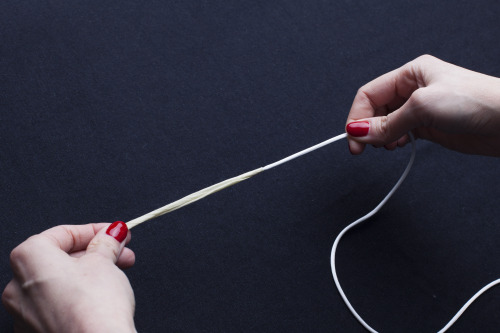
Use cording to plough loops easily without thread breakage.
Y'all'll need:
- Lengths of cloth for the straps
- A length of cording several inches longer than the finished strap
- sewing machine
- thread
Step | 01
Lay the cording downward the centre of the strap lengthwise, on the correct side of the fabric. Stitch in identify across the curt terminate.
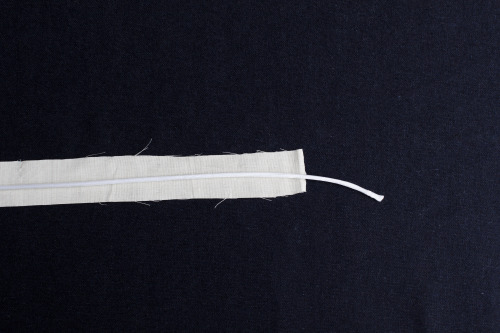
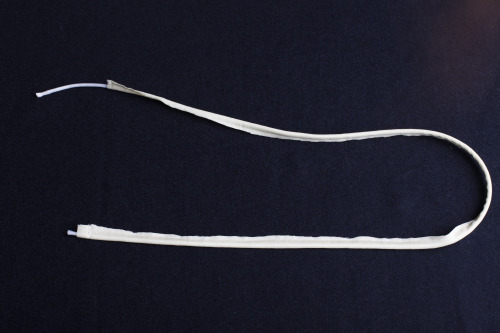
Step | 02
Wrap the fabric around the cording and sew lengthwise, using a 1/four inch seam assart. Exist careful not to catch the cording in the seam. Trim the seam assart to i/8 inch subsequently stitching (come across sidebar).
Step | 03
Pull the cording to turn the loop to the right side, pushing the terminate around the cord as information technology begins to bunch up.
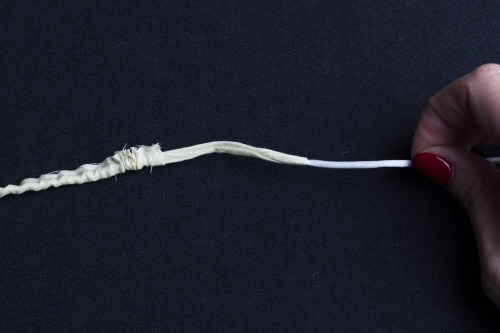
Fraying Cloth
If your material is prone to fraying, the small seam allowances required for spaghetti straps tin cause the straps to autumn apart as you handle them. To forestall this, run up a second line next to the first at a scant one/8 inch. Trim the seam assart downwards next to this outer line of stitches.
Bobby Pin
If y'all don't have cording handy, this old play tricks using a hair pin will relieve you time.
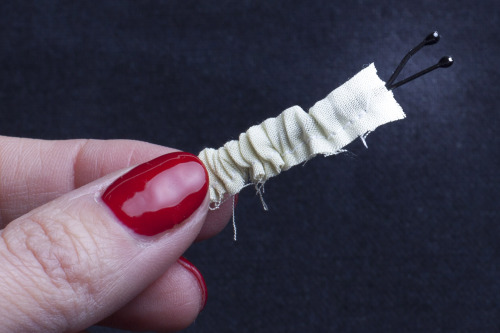
A unproblematic hair pivot tin can guide your fabric through even better than a needle or safety pivot.
You'll need:
- Lengths of textile for the straps
- One bobby pin
- sewing machine
- thread
- modest, sharp shears
Pace | 01
Fold the strap in half lengthwise and stitch using a 1/four inch seam allowance. Trim seam allowance to ane/eight inch.
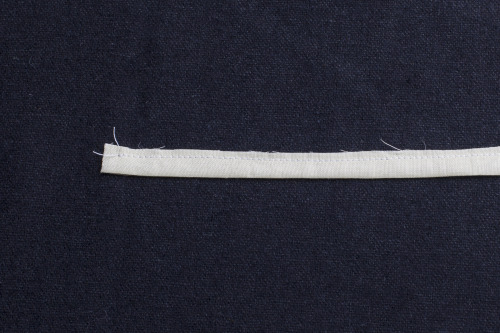
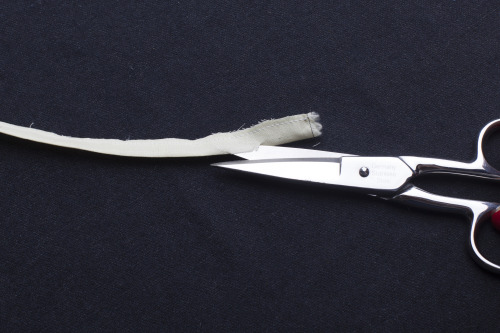
Step | 02
Cut a small-scale slit in the tube, approximately 1/2 inch from the terminate.
Stride | 03
Insert one terminate of the bobby pin through the top of the tube, and one end through the slit.
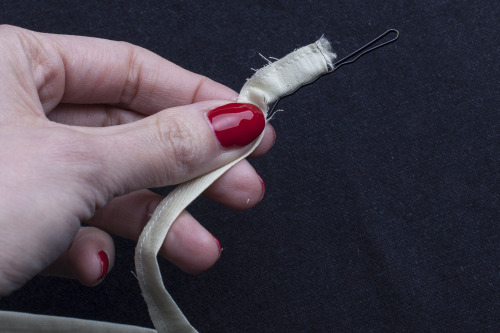
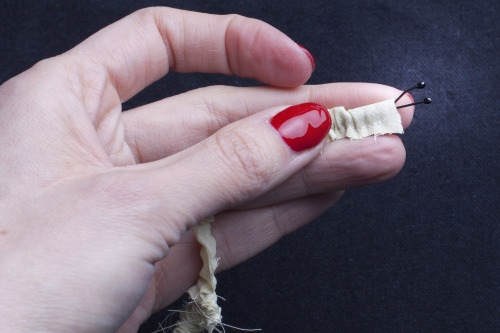
Step | 04
Work the bobby pin downwards through the tube and out the other end. Pull to plow completely right side out.
Plastic Straw
This nifty trick uses a apprehensive drinking straw to help brand the turning process easier.
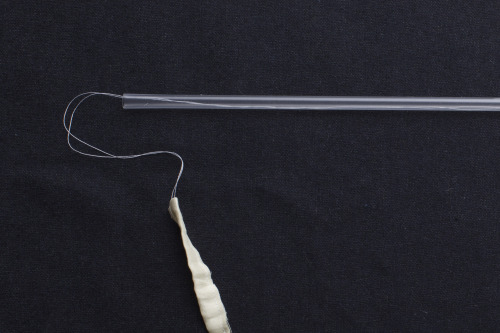
A straw adds a stiff aqueduct to pull the material through.
You'll need:
- Lengths of fabric for the straps
- plastic drinking straw
- sewing machine
- thread
- hand sewing needle
Step | 01
Fold the strap in half lengthwise and stitch using a one/4 inch seam allowance. Get out a very long thread tail at the end, a few inches longer than your entire strap. Trim seam allowance to 1/eight inch.
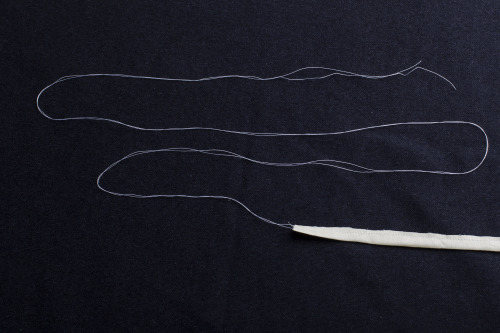
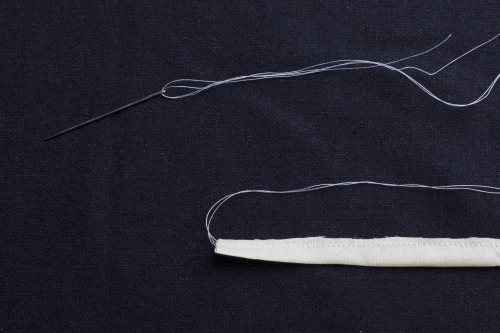
Step | 02
Thread both pieces of the tail onto a mitt sewing needle.
Footstep | 03
Drib the needle into the material tube, middle terminate get-go. Work the needle through and pull out the other side.
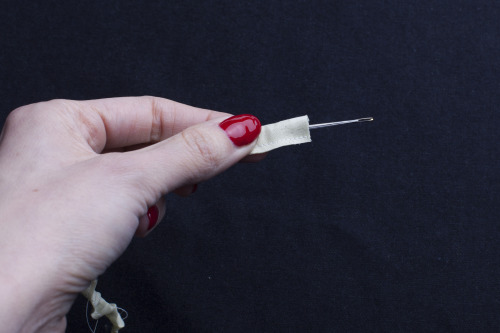
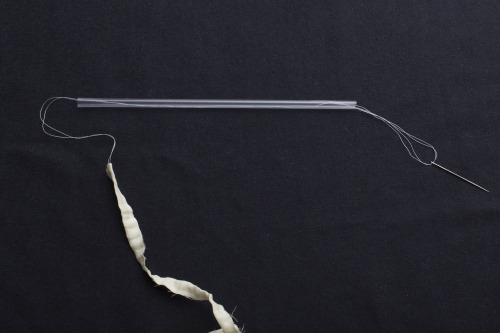
Step | 04
Drop the needle into the drinking harbinger and insert the harbinger into the tube.
Pace | 05
Work the straw near to the other stop. Begin pulling on the thread tail, so that the end folds into the center of the harbinger. Pull gently. The harbinger will prevent your fabric from bunching upwards at the end.
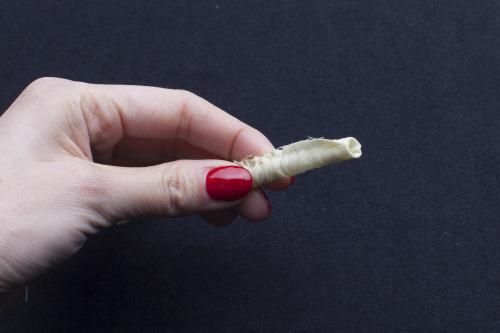
Flat Strap
Don't want to bother turning loops at all? Attempt a folded and flat strap instead.
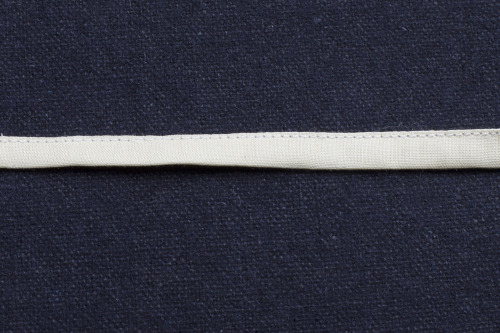
To avoid turning all together, try flat stitched straps instead of rounded ones.
You'll need:
- Lengths of fabric for the straps
- sewing machine
- edgestitch presser foot
- thread
- atomic number 26
Step | 01
Fold the strap in half, incorrect sides together, and press.
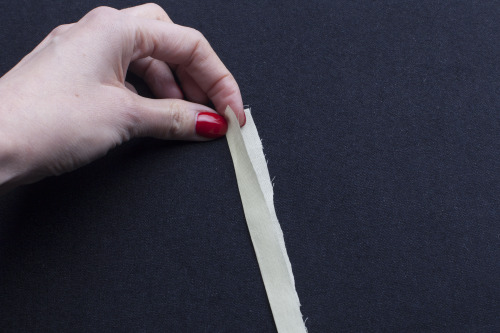
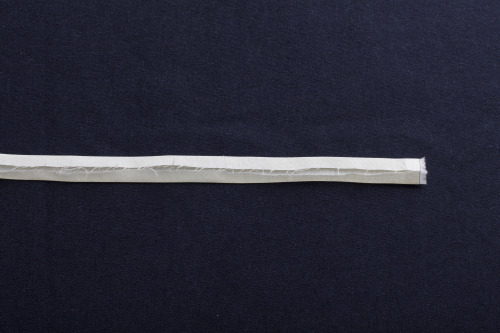
Step | 02
Fold each raw border again toward the eye and press, similar to creating bias tape.
Pace | 03
Fold the strap in half along the first pressed line, tucking in the raw edges.
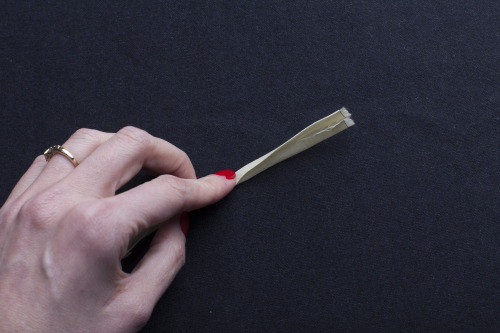
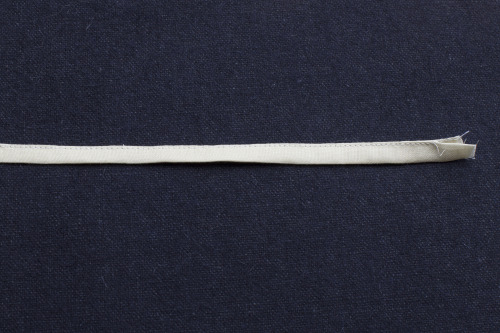
Step | 04
Edgestitch along the open up edge to secure the strap, making sure to catch both edges.
Source: https://www.seamwork.com/magazine/2015/01/4-tricks-for-making-spaghetti-straps

0 Response to "How To Make An Adjustable Strap Without Hardware"
Post a Comment